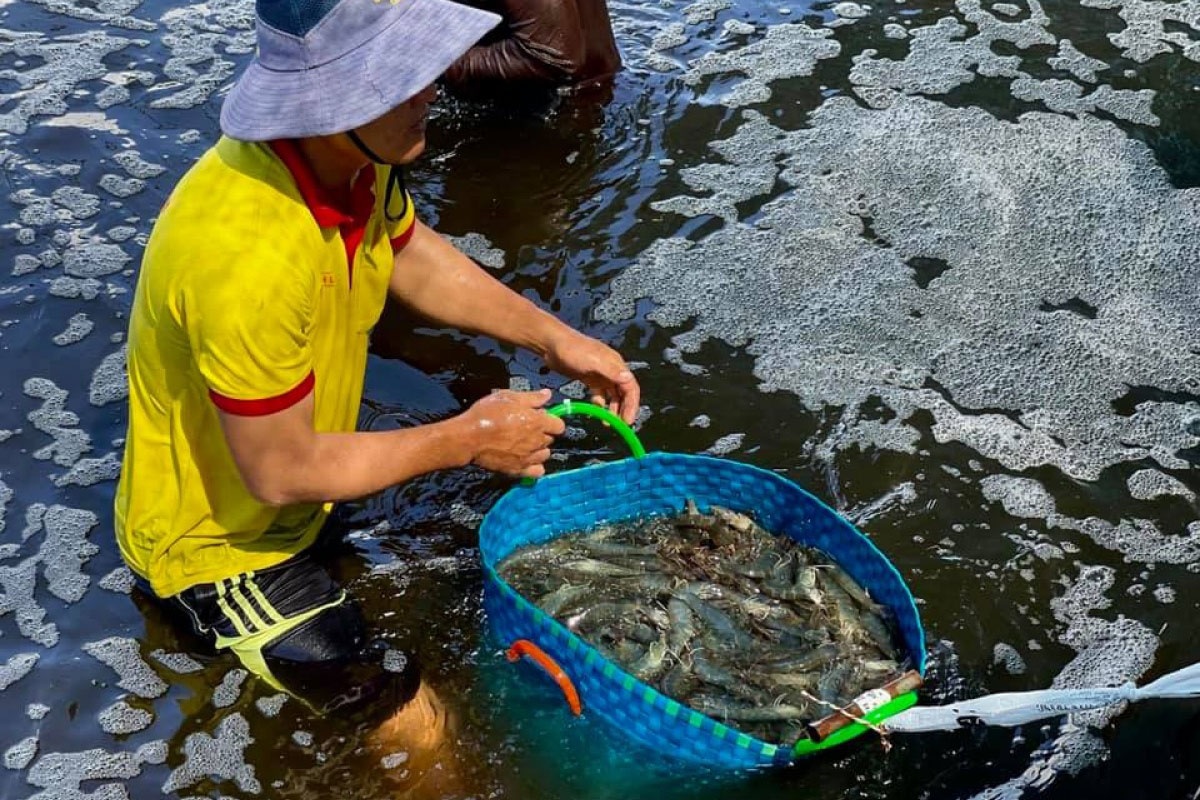(seafood.vasep.com.vn) Over the past time, the aquaculture sector in Ben Tre has maintained a quite stable development, with more than 50,000ha of potential aquaculture area. By the end of 2022, Ben Tre’s aquaculture area was 47,590ha; total farming production reached 310,015 tons. Main farmed species included 83,100 tons of brackish water shrimp, 14,900 tons of molluscs, 203,000 tons of pangasius, over 90% of the farmed output has high economic value for export processing. Ben Tre has 13 seafood processing factories for export with a designed capacity of more than 150,000 tons. Seafood export output in 2022 increased by 14.02%. Currently, Ben Tre is calling for investment in a shrimp processing plant to process raw shrimp products of the province.
The province has identified fisheries as one of the two key economic sectors of the province. Currently, Ben Tre focuses on 5 main farming species: whiteleg shrimp, black tiger shrimp, pangasius, clams and giant freshwater shrimp. In addition, Ben Tre also develops a number of other cultured species such as seabass, red tilapia, Gift tilapia, sea crabs and blood cockles. In the structure of the aquaculture, brackish water shrimp farming accounts for about 76% in 2022 with 36,300 hectares of farming. In which, the area of intensive and semi-intensive shrimp farming in rotation is 12,500 ha (black tiger shrimp is nearly 500 ha, vannamei shrimp is more than 12,000 ha), the rest of about 24,000 ha is the area for rice shrimp farming, extensive farming, and forest interspersed farming.

Ben Tre is calling for investment in a shrimp processing plant to process raw shrimp products of the province.
The productivity of intensive and semi-intensive brackish water shrimp farming has been increasingly improved such as whiteleg shrimp from 12-15 tons/ha, black tiger shrimp from 6-8 tons/ha; extensive farming, rice shrimp, wild shrimp reached 250 kg/ha. The value of the brackish water shrimp industry in Ben Tre accounts for 53% of the total value of the aquaculture sector. According to the Fisheries Sub-Department, the value of the marine shrimp industry accounts for 6,321/11,931 billion VND.
In recent years, the model of shrimp farming applying high technology (Computer Numerical Control (CNC)) has been evaluated with high efficiency. One of the milestones marking the development of brackish water shrimp farming is the rapid transition from traditional semi-intensive and intensive farming to CNC applied shrimp farming in three districts including Ba Tri, Binh Dai and Thanh Phu.
With an initial area of 550ha in 2018, Ben Tre has increased the farming area to 2,567ha by the end of 2022. The average yield is from 60-70 tons/ha of water surface, the average profit is from 700-800 million VND/crop, bringing high economic efficiency for farmers. The output of CNC shrimp farming reached 42,000 tons, accounting for 50% of the province's total brackish water shrimp farming output. The advantages of this model are closed investment, isolation of the disease environment in the early stages, high density farming, good management of feed and environment, improved survival rate, large shrimp farming, conditions to increase productivity, output per unit area and especially easier for waste treatment.
Compiled by Thuy Linh